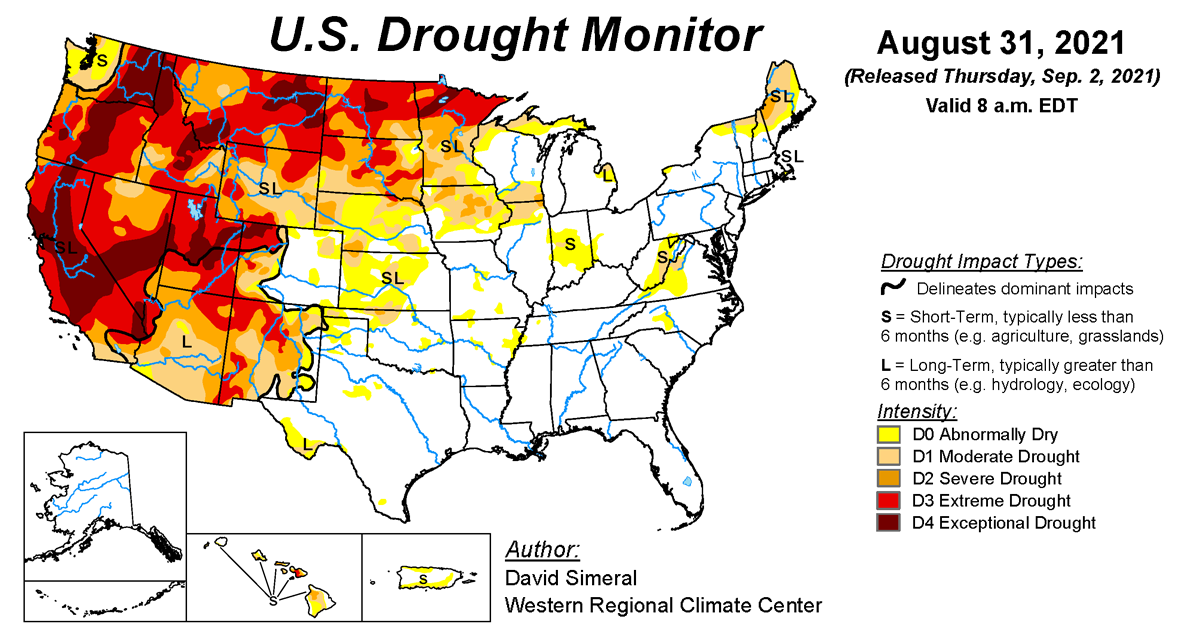
According to the August 31, 2021, U.S. Drought Monitor, moderate to exceptional drought covers 39.0% of the United States including Puerto Rico, a decrease from last week’s 39.6%. The worst drought categories (extreme to exceptional drought) decreased from 21.4% last week to 20.5%.
The atmospheric circulation over the contiguous United States consisted of a high-pressure ridge across the southern tier states to the East Coast and an active jet stream across the northern tier states. Pacific weather systems and their associated surface fronts and lows brought above-normal precipitation to the northern and central Plains and Great Lakes, while ridging kept most of the West, southern Plains, and East Coast drier than normal.
Hurricane Ida was steered by the Bermuda High into the northern Gulf Coast. Ida and its remnants moved north into the southern Mississippi, Tennessee, and Ohio Valleys, leaving flooding rains and destruction in its path. The Pacific systems gave the Pacific Northwest and parts of the northern Plains a cooler-than-normal week. The upper-level ridging kept the Southwest and most of the country east of the Rockies warmer than normal, with the central Plains to Mid-Atlantic and Great Lakes states having the warmest weekly temperature departures.
Drought contraction occurred in the Midwest to northern and central Plains, and parts of the West, while expansion or intensification happened in other parts of the West and High Plains, and parts of Puerto Rico. Overall, contraction exceeded expansion, with the nationwide moderate to exceptional drought area decreasing this week.
Abnormal dryness and drought are currently affecting over 95 million people across the United States including Puerto Rico—about 30.6% of the population.

The full U.S. Drought Monitor weekly update is available from Drought.gov.
In addition to Drought.gov, you can find further information on the current drought as well as on this week’s Drought Monitor update at the National Drought Mitigation Center.
The most recent U.S. Drought Outlook is available from NOAA’s Climate Prediction Center and the U.S. Department of Agriculture provides information about the drought’s influence on crops and livestock.
For additional drought information, follow #DroughtMonitor on Facebook and Twitter.



